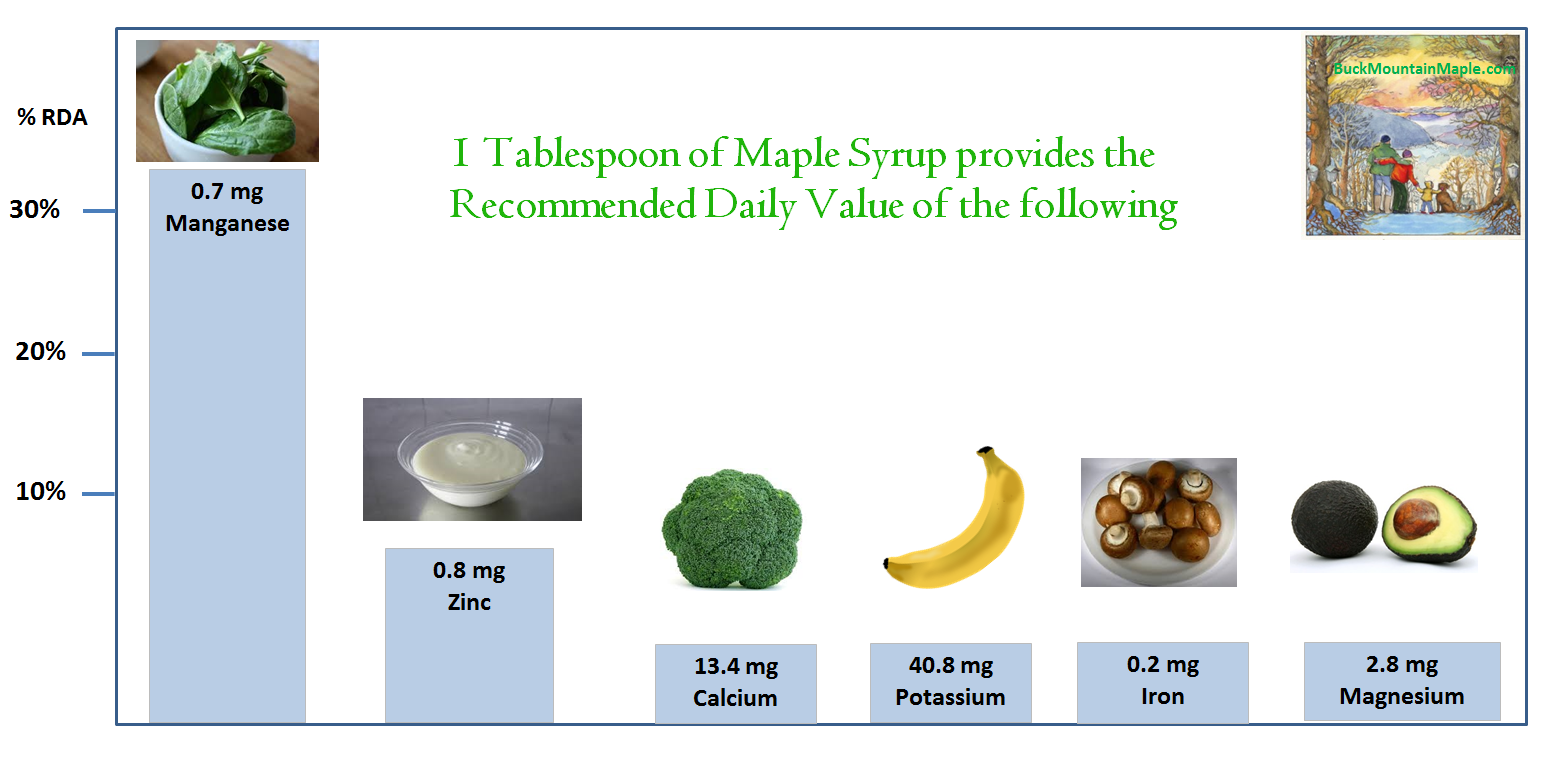What Are the Benefits of Maple Syrup ?
The Maple tree produces natural sources of Calcium, Riboflavin, Manganese, Zinc, and Potassium. Maple syrup is low glycemic, containing all natural sugars. It has 65 antioxidants and more than 50 polyphenols, 5 of which are unique to Maple. These polyphenol compounds are also present in blueberries, green tea and red wine.
The medical journal Pharmaceutical Biology revealed that pure maple syrup contains antioxidants that may be beneficial for reducing inflammation and free radical damage.
Maple syrup also contains powerful free radical fighting properties. The antioxidant strength is similar to that of red Gala apples, broccoli, raw tomatoes and bananas, providing between ten and 38% of the recommended daily antioxidant allowance. Antioxidants have been shown to support the immune system and slow the effects of aging.
What Makes Maple Syrup Better than Regular Sugar?
Maple syrup is derived from the sap of maple trees. Unlike the process of refining cane sugar – maple syrup is an unrefined pure product. An organically certified maple sugarbush supports the land, maintaining nutrient rich soil, water quality and healthy trees, working towards balanced plant and animal ecosystems and healthier communities.
Maple Syrup Nutritional Facts
Research has clearly documented that maple syrup has a higher nutritional value than all other common sweeteners.

Maple syrup’s plant-based compounds reduce oxidative stress, slowing down the aging process and increasing the strength of our immune system.
Maple syrup is used to help lower skin inflammation, redness, blemishes and dryness. Combined with raw milk or yogurt and rolled oats, this natural mixture applied to the skin as a mask can hydrate skin while reducing bacteria and signs of irritation.
Dr. Nathalie Tufenkji and her McGill team investigated maple syrup extracts and their effects on antibiotics. The maple syrup extract helped the antibiotics work better. Researchers found the extract increased the permeability of the bacteria, helping the antibiotics into the interior of bacterial cells. They observed the same antimicrobial effect with upwards of 90 percent less antibiotics.
“There are other products out there that boost antibiotic strength, but this may be the only one that comes from nature” Tufenkji says.

